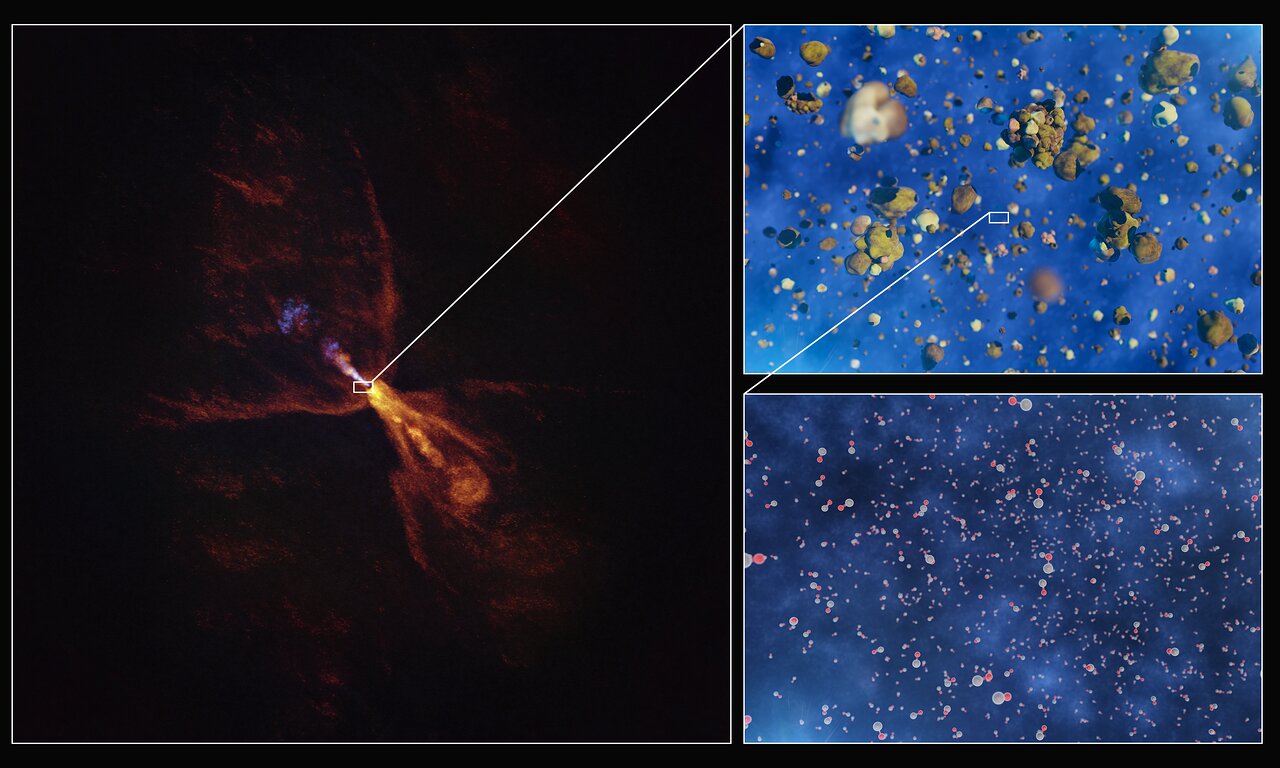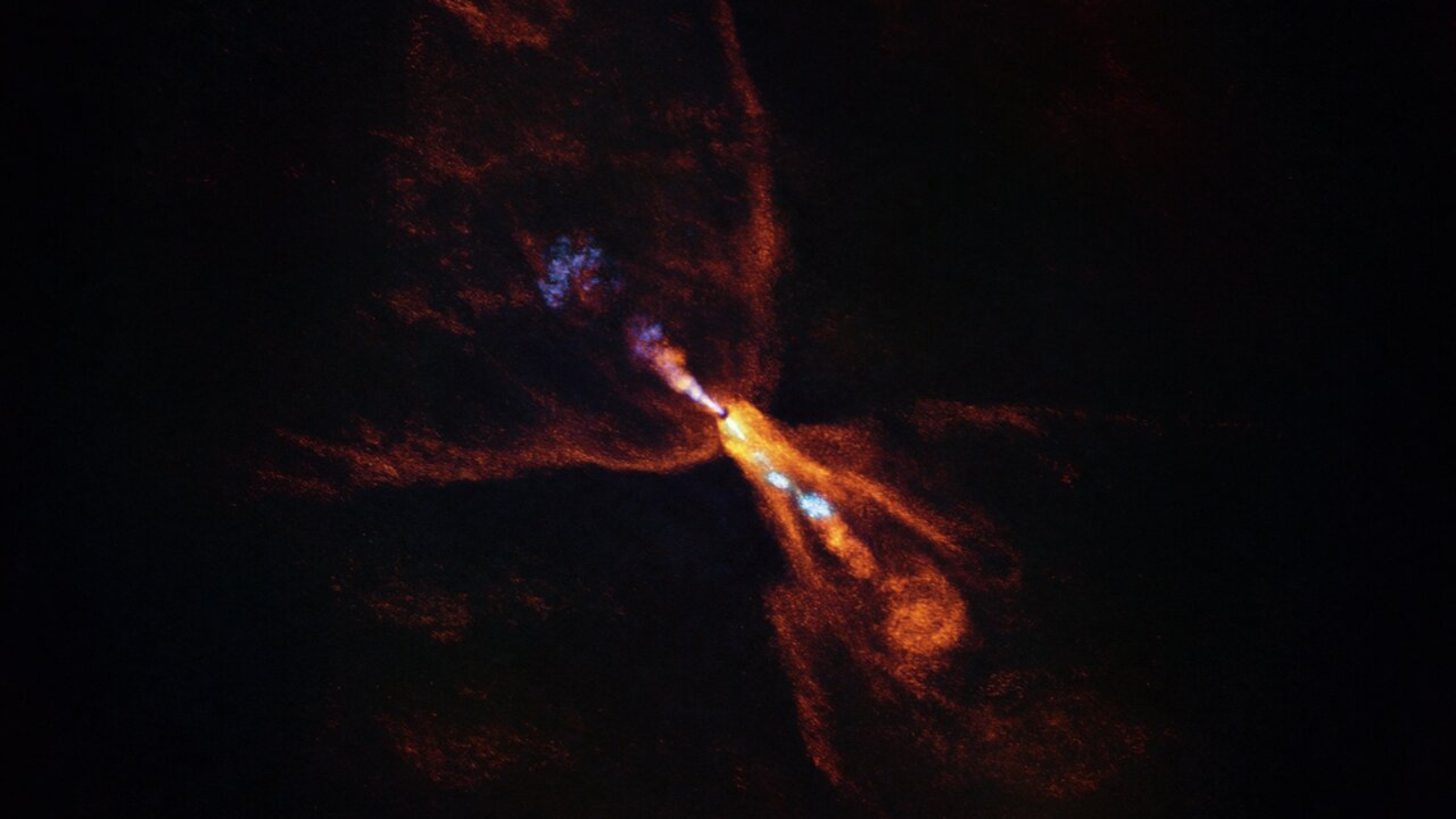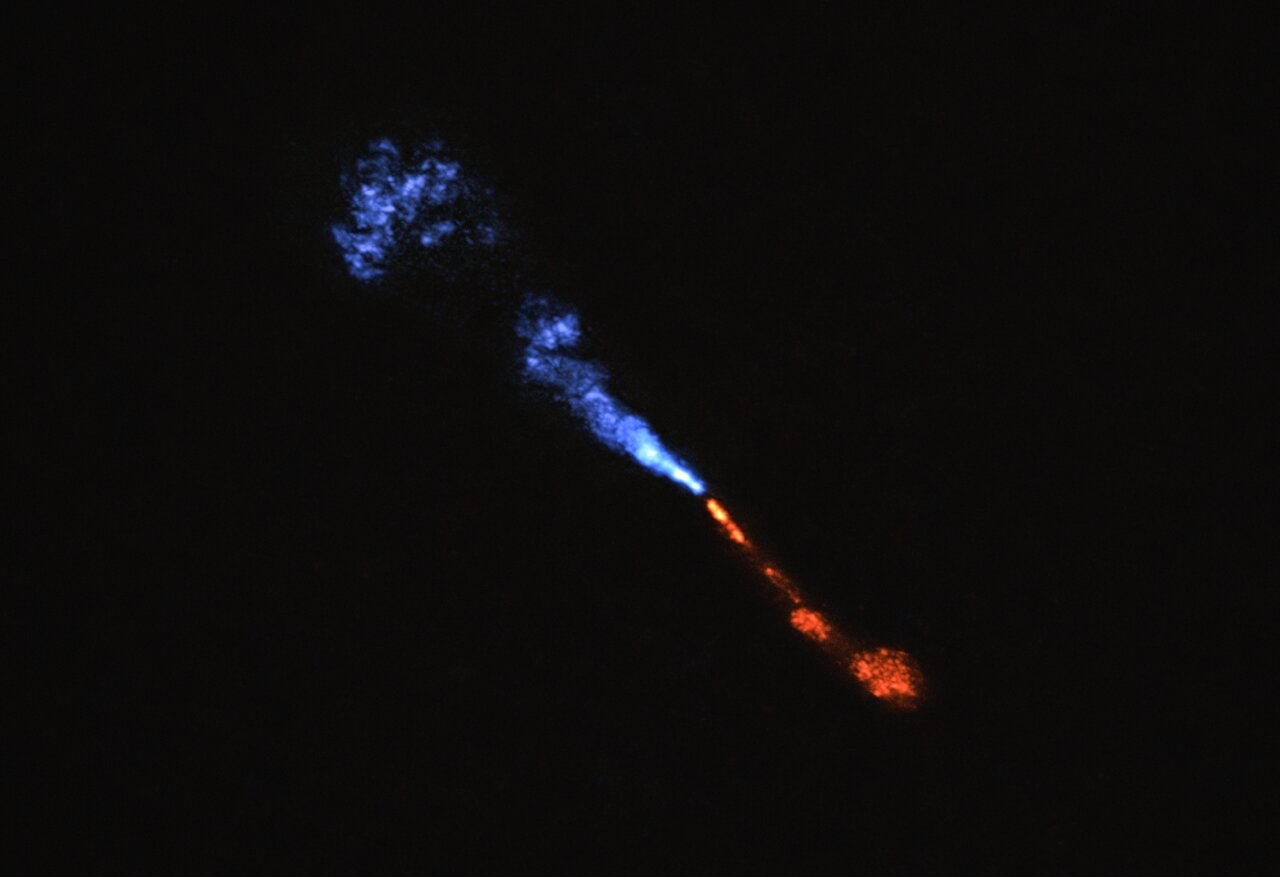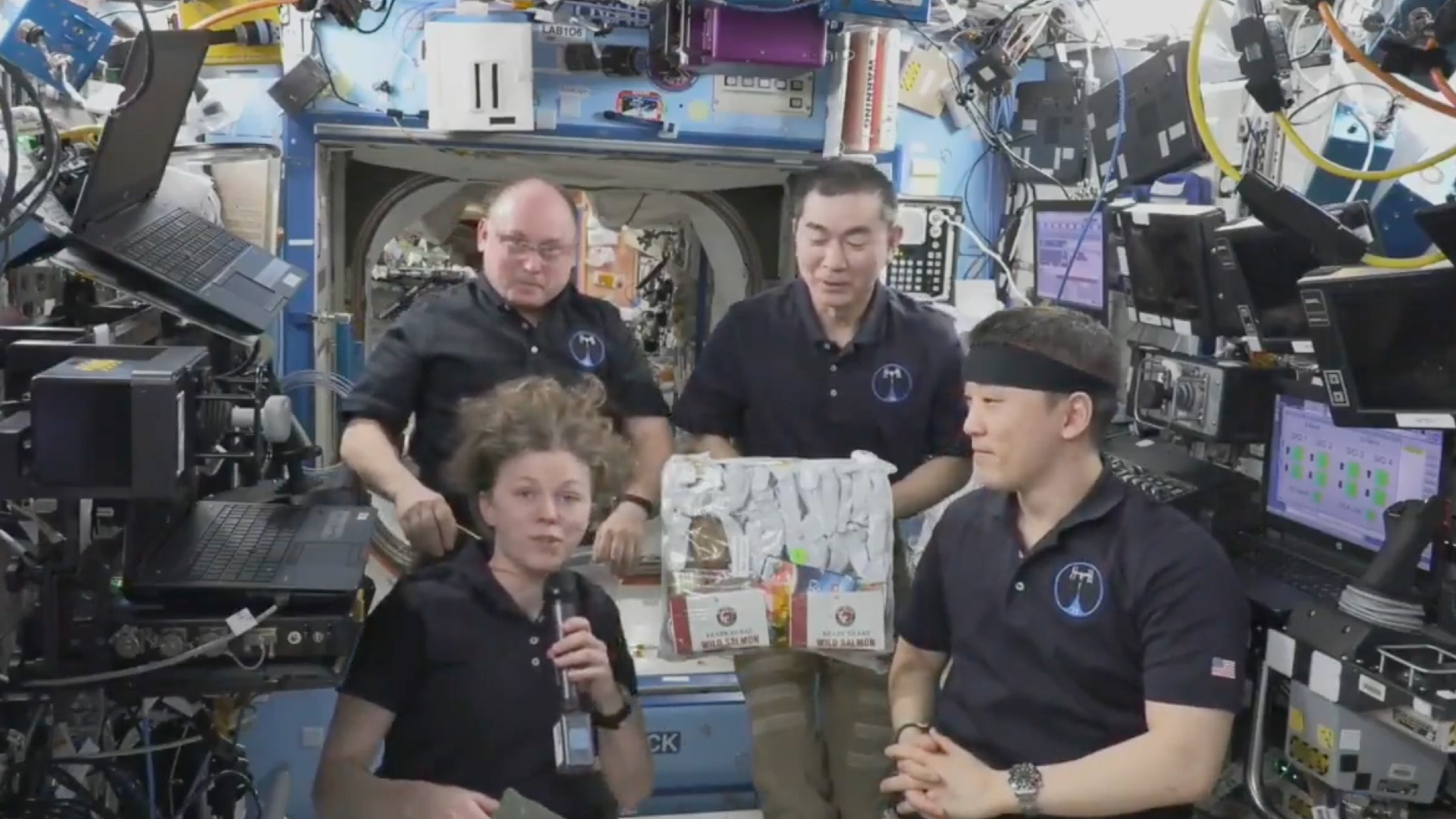Astronomers witness the birth of a planetary system for the 1st time (video)
"For the first time, we have identified the earliest moment when planet formation is initiated around a star other than our sun."
Astronomers have witnessed the birth of a planetary system that could one day resemble the solar system. The discovery offers scientists a proxy to study how our home planetary system formed around the sun around 4.6 billion years ago.
The team was able to pinpoint the moment specks of material that will one day forge planets began to form around the infant star HOPS-315, located around 1,300 light-years away.
The breakthrough was made possible with data from the Atacama Large Millimeter/ submillimeter Array (ALMA), an array of 66 radio telescopes located in the desert of northern Chile, and observations from the James Webb Space Telescope (JWST).

"For the first time, we have identified the earliest moment when planet formation is initiated around a star other than our sun," team leader and Leiden University researcher Melissa McClure said.
The team's results were published on Wednesday (July 16) in the journal Nature.
Protostars and protoplanetary disks
Stars are born when cool and overdense patches of interstellar gas and dust collapse under their own gravity. This results in a "protostar" surrounded by an envelope of the same material from which it formed.
This material is eventually flattened out into a swirling disk with the protostar at its heart. That structure is known as a "protoplanetary disk," as it is from this and within it that new planets will form.
Breaking space news, the latest updates on rocket launches, skywatching events and more!
Astronomers have seen many infant stars surrounded by protoplanetary disks, embedded within which are young and massive Jupiter-sized worlds. However, to see the origin of these fresh extrasolar planets or "exoplanets," astronomers needed to catch protoplanetary disks at an earlier stage.
"We've always known that the first solid parts of planets, or 'planetesimals,' must form further back in time, at earlier stages," McClure said.
A clue as to what scientists should be looking for in these disks at early stages can be found on Earth, sealed within meteorites that have fallen to our planet.

Sowing the seeds of the solar system
Meteorites are fragments of asteroids that formed 4.6 billion years ago at the same time that the planets of our solar system were taking shape.
That means that trapped within these space rocks is a fossil record of our planetary system, including the materials that were present at its origin.
Within meteorites is a wealth of crystalline minerals that contain silicon monoxide, which condenses at high temperatures, such as those found in the protoplanetary disk around the sun during the formative period of the solar system.
This crystalline material was the first solid matter in the solar system, and was bound together by gravity to create mile-wide planetesimals, the seeds of the terrestrial planets like Earth and the cores of solar system gas giants like Jupiter.

This team was able to spot traces of hot minerals condensing in the protoplanetary disk swirling around HOPS-315. In particular, they detected silicon monoxide both as a gas around this infant star and in crystalline materials. This suggests that the condensation of minerals has just begun around HOPS-315.
"This process has never been seen before in a protoplanetary disk — or anywhere outside our solar system," team member and University of Michigan researcher Edwin Bergin said.
The minerals were first spotted by the JWST, with ALMA pinpointing their location to a small area of the protoplanetary disk. This region has a similar orbital distance to HOPS-315 as the distance between the solar system's main asteroid belt and the sun.
"We're really seeing these minerals at the same location in this extrasolar system as where we see them in asteroids in the solar system," team member and Leiden University researcher Logan Francis said.
That means HOPS-315 is an excellent proxy to study our own cosmic history.
Team member Merel van 't Hoff of Purdue University compared this discovery to "a picture of the baby solar system."
"We're seeing a system that looks like what our solar system looked like when it was just beginning to form," van 't Hoff concluded. "This system is one of the best that we know to actually probe some of the processes that happened in our solar system."

Robert Lea is a science journalist in the U.K. whose articles have been published in Physics World, New Scientist, Astronomy Magazine, All About Space, Newsweek and ZME Science. He also writes about science communication for Elsevier and the European Journal of Physics. Rob holds a bachelor of science degree in physics and astronomy from the U.K.’s Open University. Follow him on Twitter @sciencef1rst.
You must confirm your public display name before commenting
Please logout and then login again, you will then be prompted to enter your display name.
